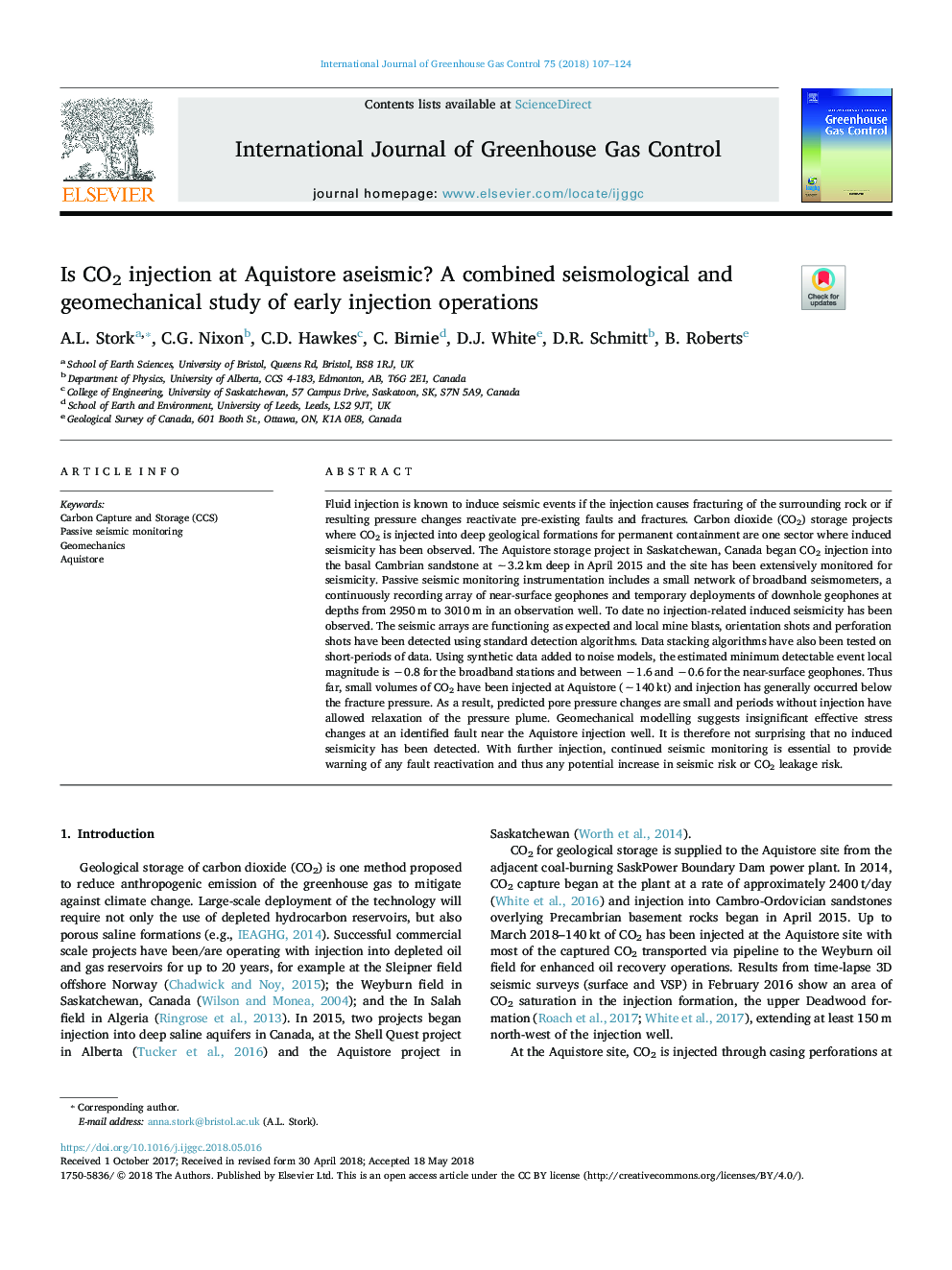| کد مقاله | کد نشریه | سال انتشار | مقاله انگلیسی | نسخه تمام متن |
|---|---|---|---|---|
| 8089321 | 1521944 | 2018 | 18 صفحه PDF | دانلود رایگان |
عنوان انگلیسی مقاله ISI
Is CO2 injection at Aquistore aseismic? A combined seismological and geomechanical study of early injection operations
دانلود مقاله + سفارش ترجمه
دانلود مقاله ISI انگلیسی
رایگان برای ایرانیان
کلمات کلیدی
موضوعات مرتبط
مهندسی و علوم پایه
علوم زمین و سیارات
فرآیندهای سطح زمین
پیش نمایش صفحه اول مقاله

چکیده انگلیسی
Fluid injection is known to induce seismic events if the injection causes fracturing of the surrounding rock or if resulting pressure changes reactivate pre-existing faults and fractures. Carbon dioxide (CO2) storage projects where CO2 is injected into deep geological formations for permanent containment are one sector where induced seismicity has been observed. The Aquistore storage project in Saskatchewan, Canada began CO2 injection into the basal Cambrian sandstone at â¼3.2â¯km deep in April 2015 and the site has been extensively monitored for seismicity. Passive seismic monitoring instrumentation includes a small network of broadband seismometers, a continuously recording array of near-surface geophones and temporary deployments of downhole geophones at depths from 2950â¯m to 3010â¯m in an observation well. To date no injection-related induced seismicity has been observed. The seismic arrays are functioning as expected and local mine blasts, orientation shots and perforation shots have been detected using standard detection algorithms. Data stacking algorithms have also been tested on short-periods of data. Using synthetic data added to noise models, the estimated minimum detectable event local magnitude is â0.8 for the broadband stations and between â1.6 and â0.6 for the near-surface geophones. Thus far, small volumes of CO2 have been injected at Aquistore (â¼140â¯kt) and injection has generally occurred below the fracture pressure. As a result, predicted pore pressure changes are small and periods without injection have allowed relaxation of the pressure plume. Geomechanical modelling suggests insignificant effective stress changes at an identified fault near the Aquistore injection well. It is therefore not surprising that no induced seismicity has been detected. With further injection, continued seismic monitoring is essential to provide warning of any fault reactivation and thus any potential increase in seismic risk or CO2 leakage risk.
ناشر
Database: Elsevier - ScienceDirect (ساینس دایرکت)
Journal: International Journal of Greenhouse Gas Control - Volume 75, August 2018, Pages 107-124
Journal: International Journal of Greenhouse Gas Control - Volume 75, August 2018, Pages 107-124
نویسندگان
A.L. Stork, C.G. Nixon, C.D. Hawkes, C. Birnie, D.J. White, D.R. Schmitt, B. Roberts,